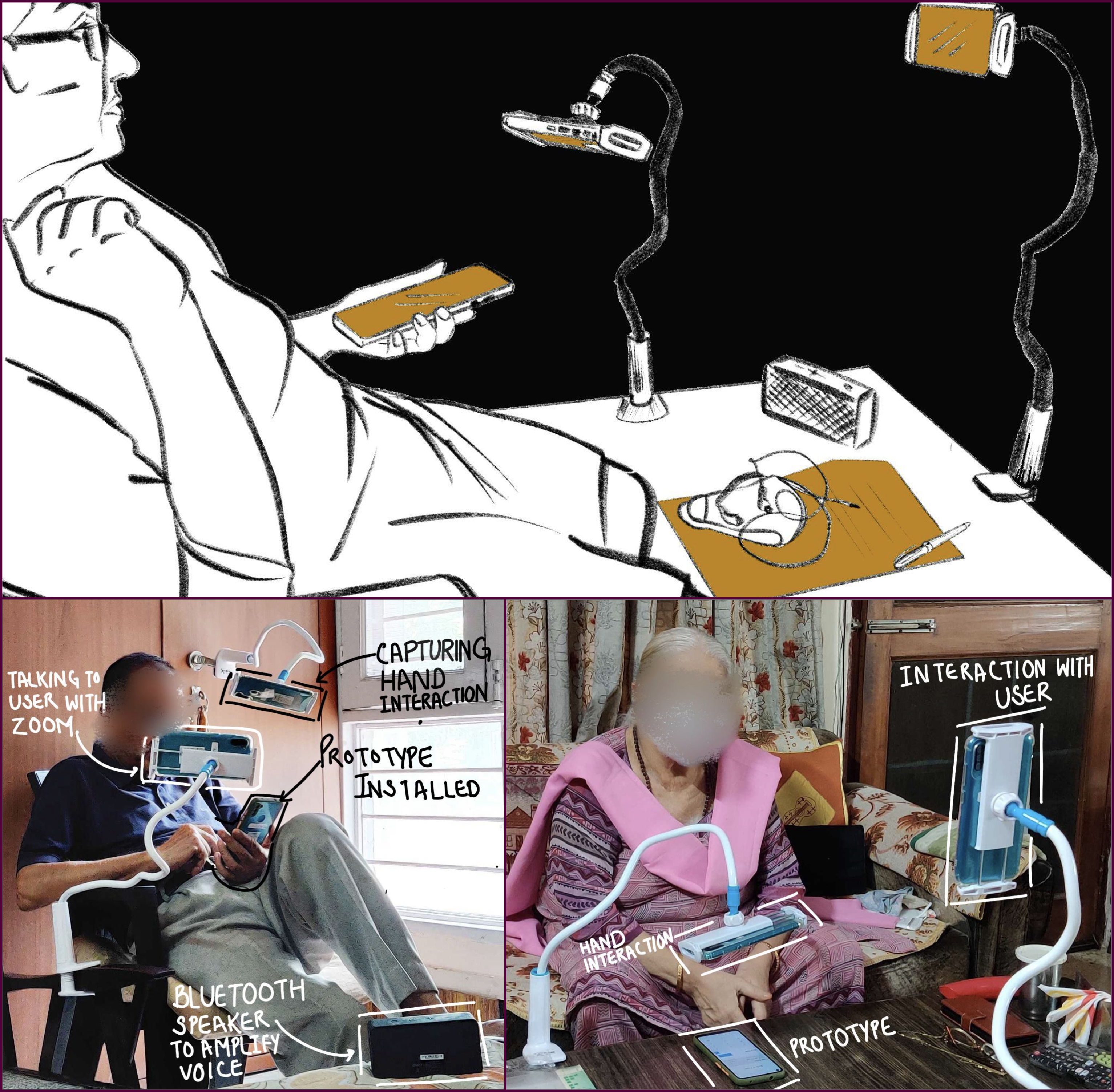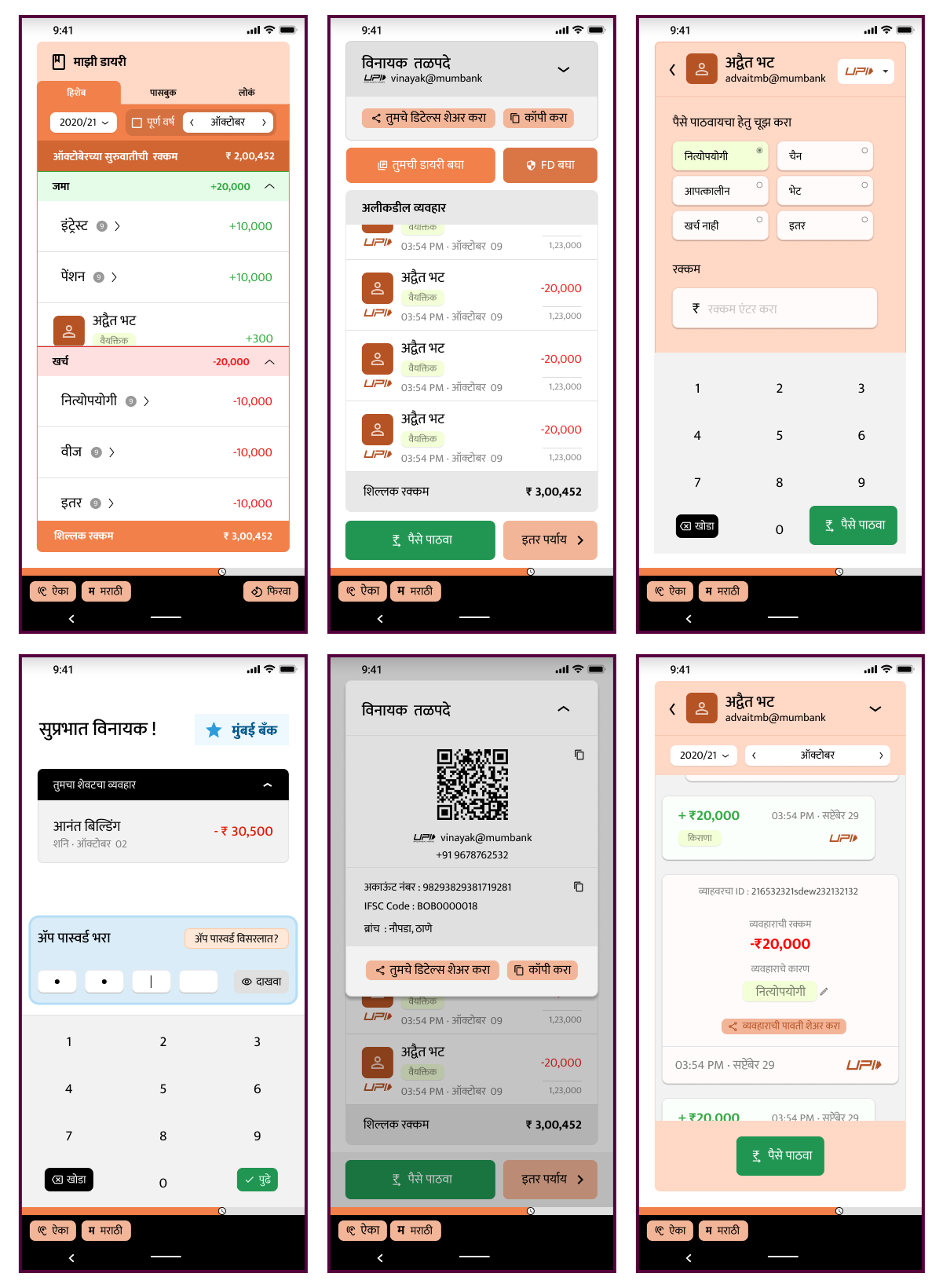In 2011, India's elderly population was 104 million, projected to double by 2050. Additionally, there were 250 million illiterate adults and 189 million with less than 5 years of schooling. This project focused on enhancing mobile banking services for these 533 million 'emergent' users, a group new to information and communication technologies. Smartphone usage is rising in India, including among middle-income elderly and less educated populations. Despite widespread adoption of applications like WhatsApp, YouTube, and Hotstar, mobile banking remains inaccessible to emergent users. This gap necessitates their physical visits to banks, causing time wastage, overcrowding, and service limitations. We aimed to design a mobile banking application interface tailored for elderly, illiterate, and less educated users. The focus was on audio-visual interfaces utilizing voice and touch inputs and audio-visual outputs, aiming for a usable and secure product.
The project employed an iterative user-centered design process, adapting to the challenges posed by Covid-19 restrictions. We prototyped and evaluated the designs across three versions and four iterations, each based on user feedback. The initial design focused on key tasks like logging in, checking balance, reviewing statements, and conducting transactions, prioritizing simplicity and clarity. Due to the pandemic, remote and socially distanced interviews were conducted using specialized software and hardware setups.

The evaluations involved elderly users and those with lower education levels, utilizing heuristic evaluations, localization in Hindi and Marathi, and formative evaluations. The team incorporated interfaces for browsing transactions, training videos, and in-app audio prompts based on user feedback. A card sorting exercise was conducted to understand transaction categorization better. The final design was evaluated through a summative evaluation with users of varying ages and education levels.

The project's findings revealed several key insights. Firstly, about half of the users could perform tasks without audio or video aids, while around 90% succeeded with either aid, highlighting the effectiveness of these supports. The color-coded passwords significantly aided users in identifying and inputting passwords correctly. The evaluations showed preferences for certain interface elements, like the arrangement of options and the use of audio prompts for better navigation. The study also highlighted the challenges users faced in understanding new concepts like QR codes and transaction categories. The final design incorporated these learnings, offering a simplified interface with clear instructions, multiple views for account information, and standardized, color-coded PINs and passwords. The project concluded with recommendations for deployment, emphasizing the need for simplified interfaces, focus on UPI payments, and support for audio and video aids to enhance usability for emergent users.